It is one of the most unknown French regions and for this reason, we have set out to remedy it through this journey through six villages of Brittany after which you will consider yourself almost an expert in this mysterious far western region of France.
Because although it is true that it has megaliths, centennial cathedrals and even top flight football teams, Brittany is packed with lovely towns They are well worth a stop.
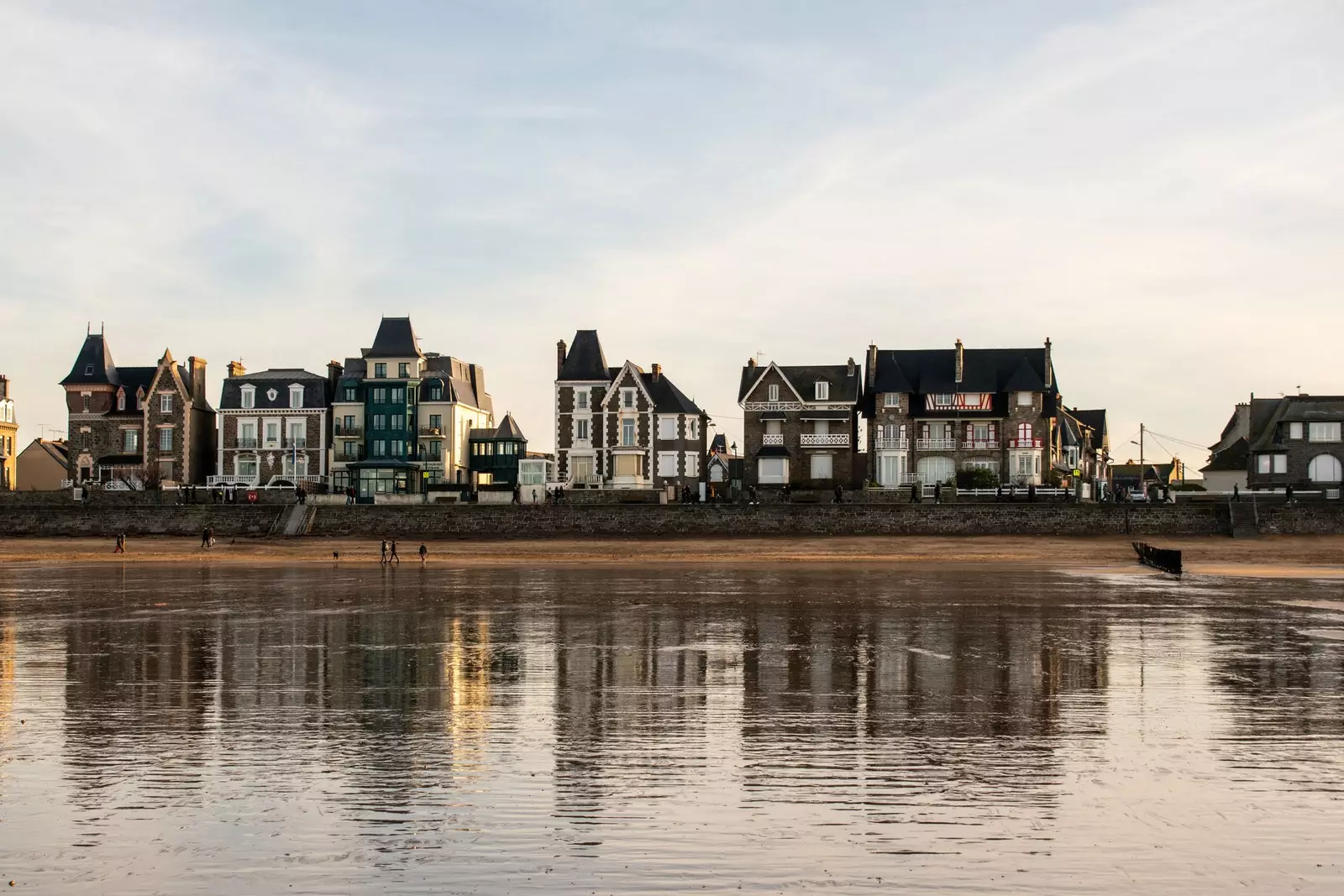
Saint Malo.
TO BEGIN, SALT FROM THE SEA
Let's make three assumptions. The first is that you are in Paris, the second is that you already know it well and the last is that you have three days off. Well, in that case we believe that it is clear what you have to do: rent a car and Brittany!
We start the route in the most famous town on the north coast of the region, Saint Malo . The relationship of this city with the sea has always been symbiotic, as evidence the huge port , where you can see even a cruise ship docked. Do not forget that explorer Jacques Cartier, one of the first Europeans to navigate the waters of the Gulf of Saint Lawrence , was born and died here.
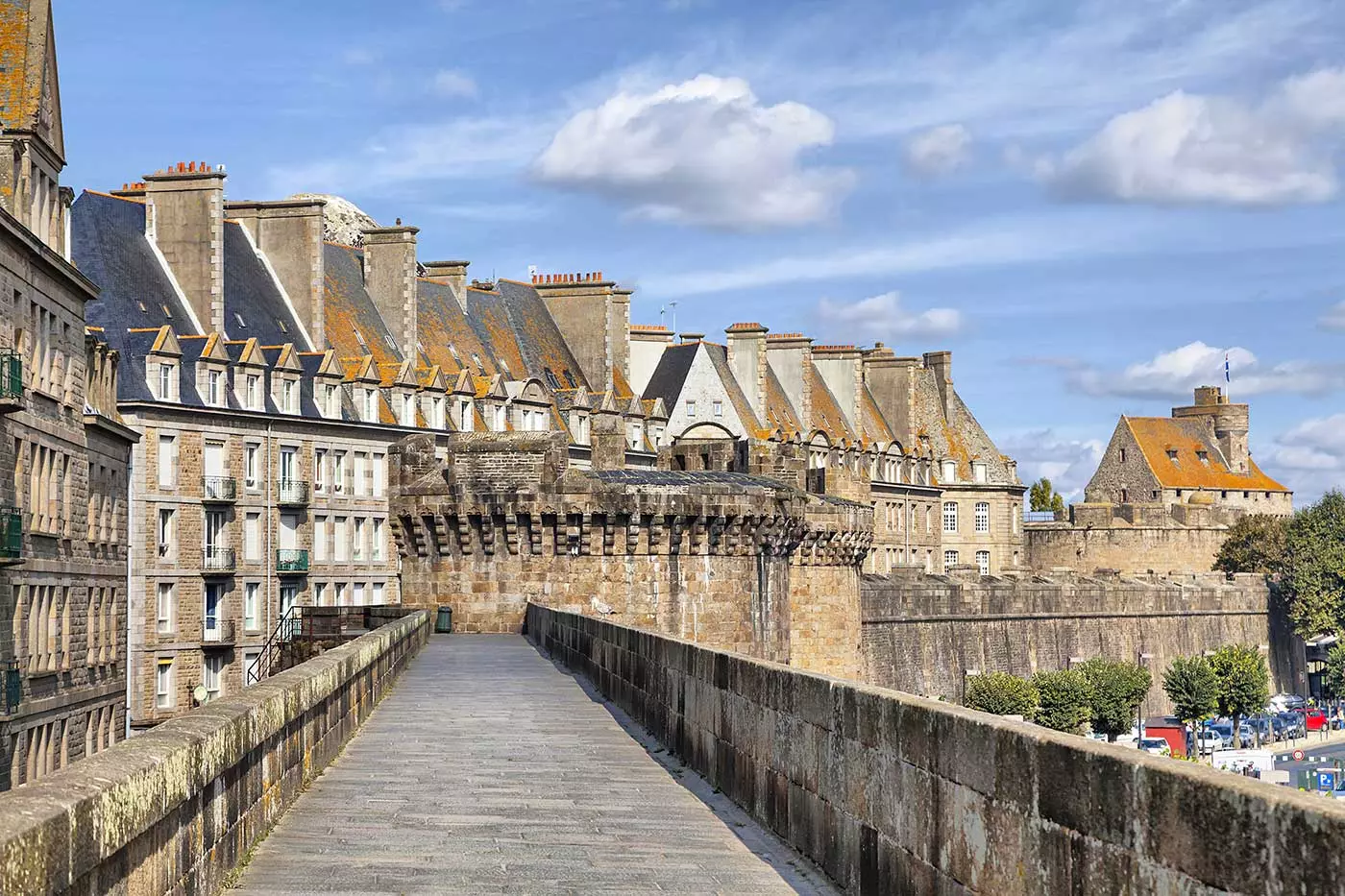
Saint Malo.
As we will do later with another coastal municipality (we avoid spoilers), our recommendation is to focus on the historical part, all that remains within the walled city. If you go through the great gate , a few meters away and without deviating, it appears Saint-Vincent Cathedral, which mixes various artistic styles due to its successive reconstructions.
In the surroundings of the cathedral there are many pastry shops and it would be good if you tried the ker-y-pom and the beignets, two types of sweets that are more difficult to find in the rest of the destinations that we have prepared for you.
Walk the cobblestone streets to the shelter of the four-story tall buildings and then climb the walls, where you will have views of the impetuous sea on one side and the city on the other.
Outside the enclosure you can walk along some of the beaches and you will see that a short distance away, on some islets, there are some constructions: they are the forts Nacional and Petit Bé. Raised with a defensive function, they are accessible on foot at low tide.
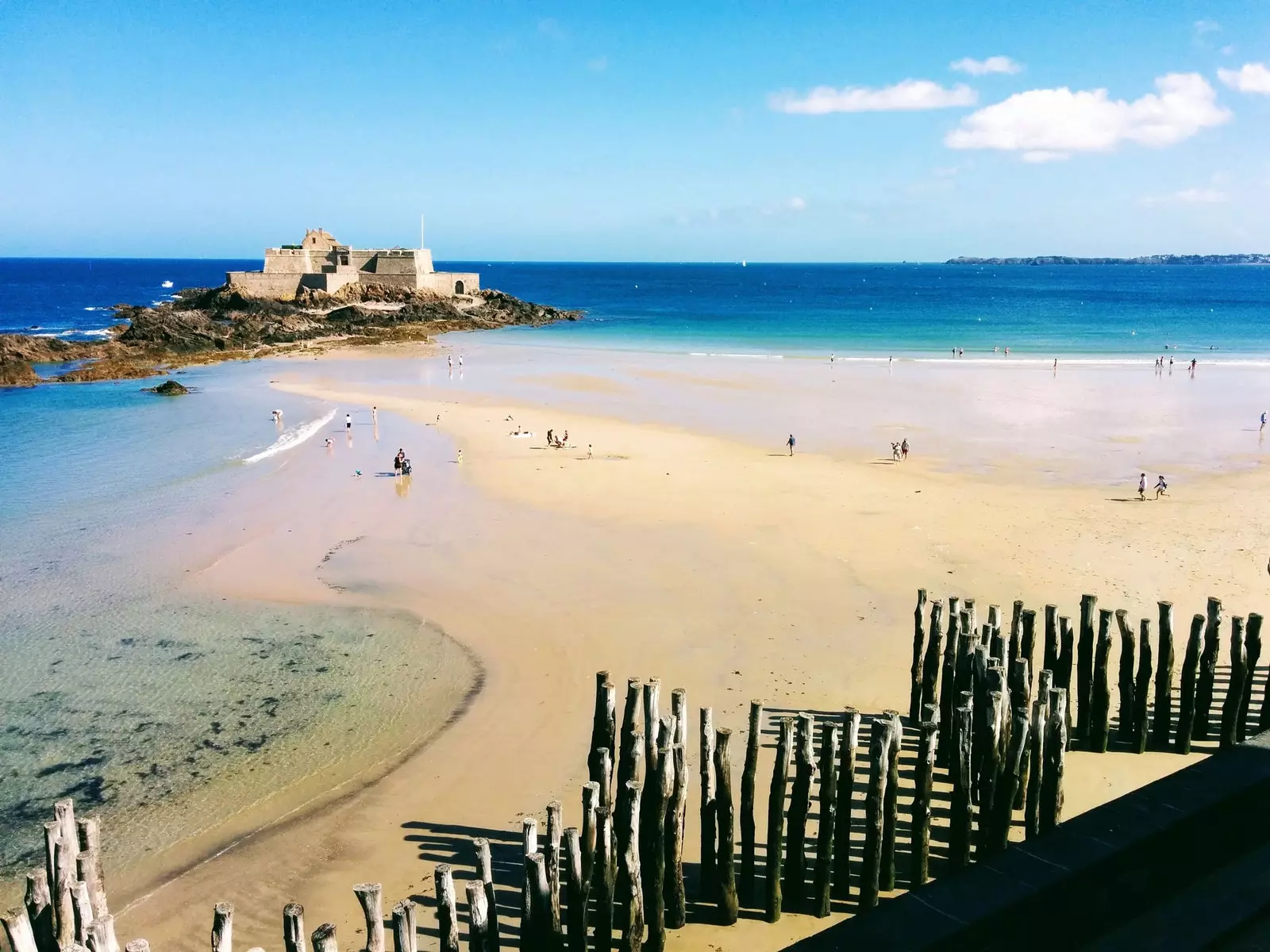
The National and Petit Bé forts are accessible on foot at low tide.
VISIT TO THE XIII CENTURY
Or to the 12th century, to the 14th... To the Middle Ages, definitely. If we were at that time we would take a boat in Saint-Malo to up the river Rance to the port that is in our next destination, Dinan . But since only 30 kilometers separate both towns, let's take advantage of the fact that we have a car and save time.
The town of Dinan is the one for lovers of medieval times: there are churches, walls... And of course a castle! If you enter Dinan at the height of the Rance and feel hungry, there are a good number of riverside restaurants at your disposal.
Already with a full stomach, go up Jerzual street through the gate of the same name. On this steep road we find those first elements that take us back centuries: Dozens of stone and half-timbered buildings line the cobbled street.
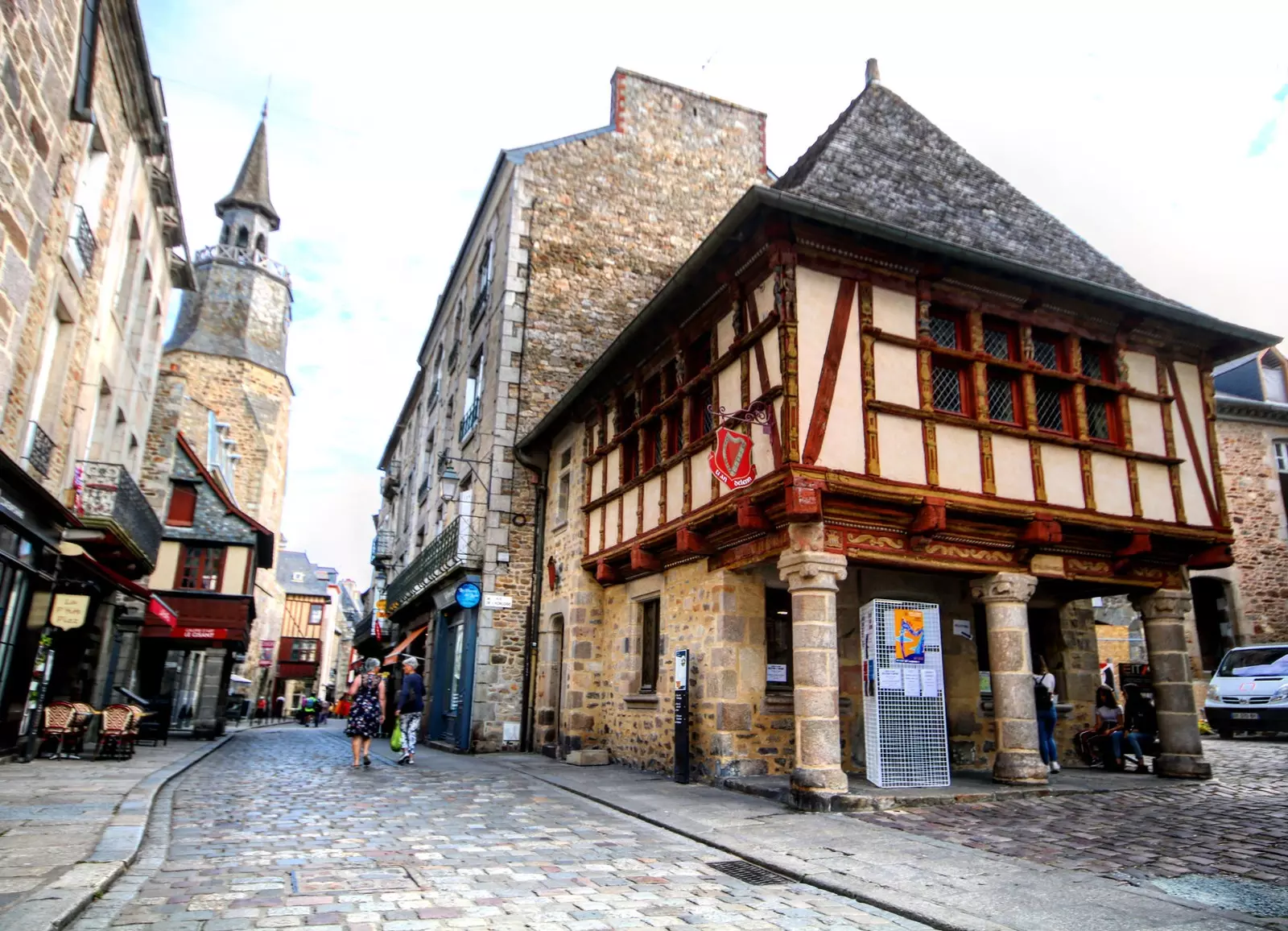
Dinan, the town of Brittany that lovers of medieval times will love.
Once we have ascended the slope we are in the town itself and we will discover Clock Tower, which you can climb to see the town from above, the basilica of Saint-Sauveur, that combines Romanesque parts with other Gothic, and the church of Saint-Malo, whose construction began in 1490. Although this trio of monuments is not particularly noteworthy, it is essential to finish giving Dinan that air of an old town that it is so looking for.
That atmosphere is rounded off the castle and the walls. The first, basically made up of two towers, was originally a single tower erected in the 1380s, but it was expanding its fortifications over the years. On your side, the wall extends next to the castle and is kept in fairly good condition, but without reaching the level of conservation that we kicked in Saint-Malo.
In Dinan the first day of the tour would end.
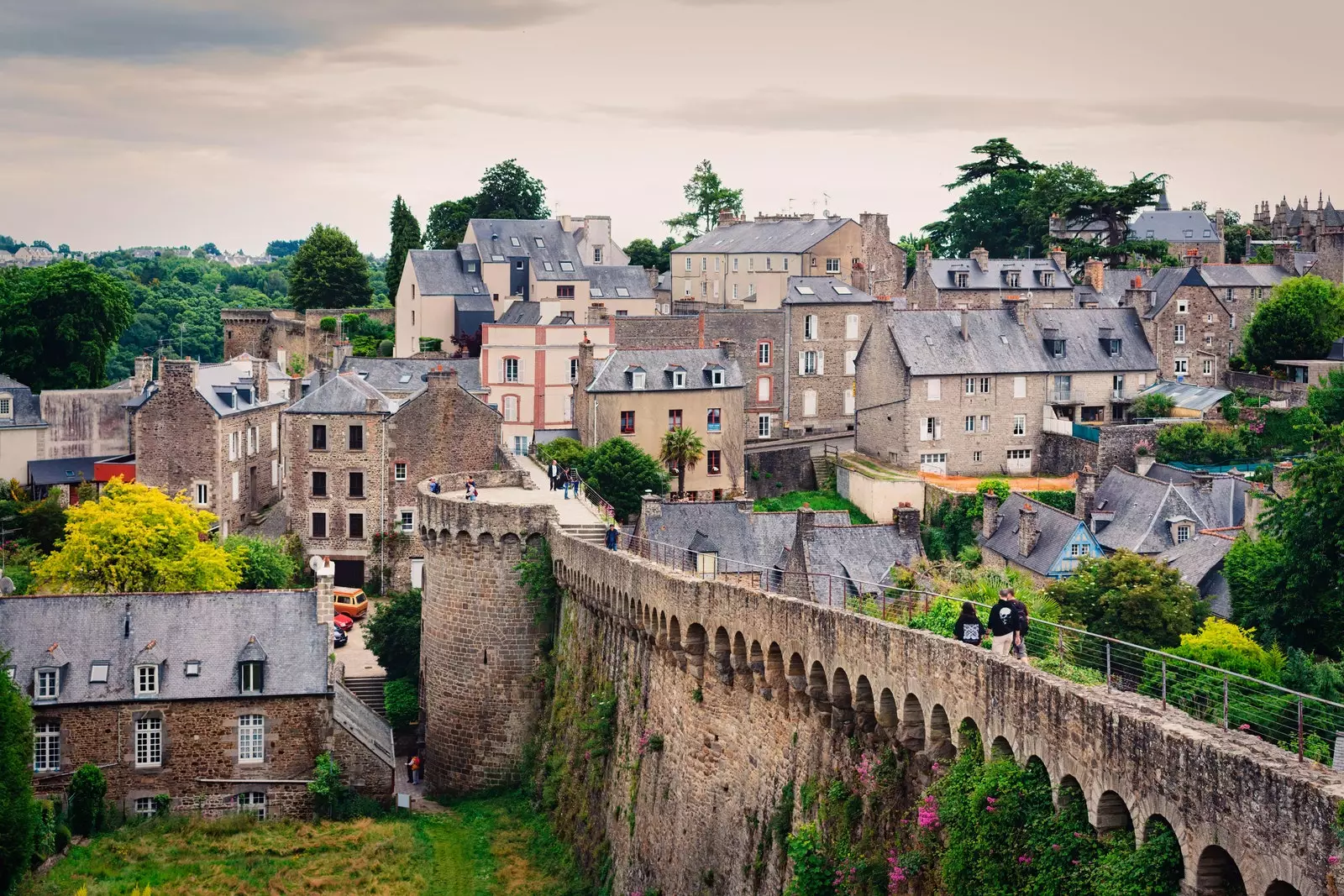
Dinan, Brittany.
STONES IN THE FOREST
For the second day we have to take the car to go to the west brittany , the confines of France. We are going to visit a few towns in the area and start in Locronan , well known in the country despite being small, for its granite buildings.
Hidden in the forest, although with the ocean very close, Locronan is part of the list of Most beautiful villages in France , a label that grants an independent association in case of having a population of less than 2,000 inhabitants and have at least two Historical Monuments, among many other criteria.
Despite the influx of tourists, the visit is by no means a bad experience: strolling through Locronan is very pleasant, as it is forbidden to circulate with vehicles through its streets, and a sense of recollection and calm floats in the environment.
The most unique thing about the small town is in the square and it is the Saint Ronan church , very striking for its characteristic facade with the arcaded entrance. It only has one tower and attached to it we have the chapel of Penity.
In the same square you can buy a kouign-amann, a cake whose origin is in Douarnenez, very close to Locronan, and about which you can read in depth here. Finish the visit while you enjoy it and if you have enough time, do not forget to walk a little through the surrounding forests. Pure nature.
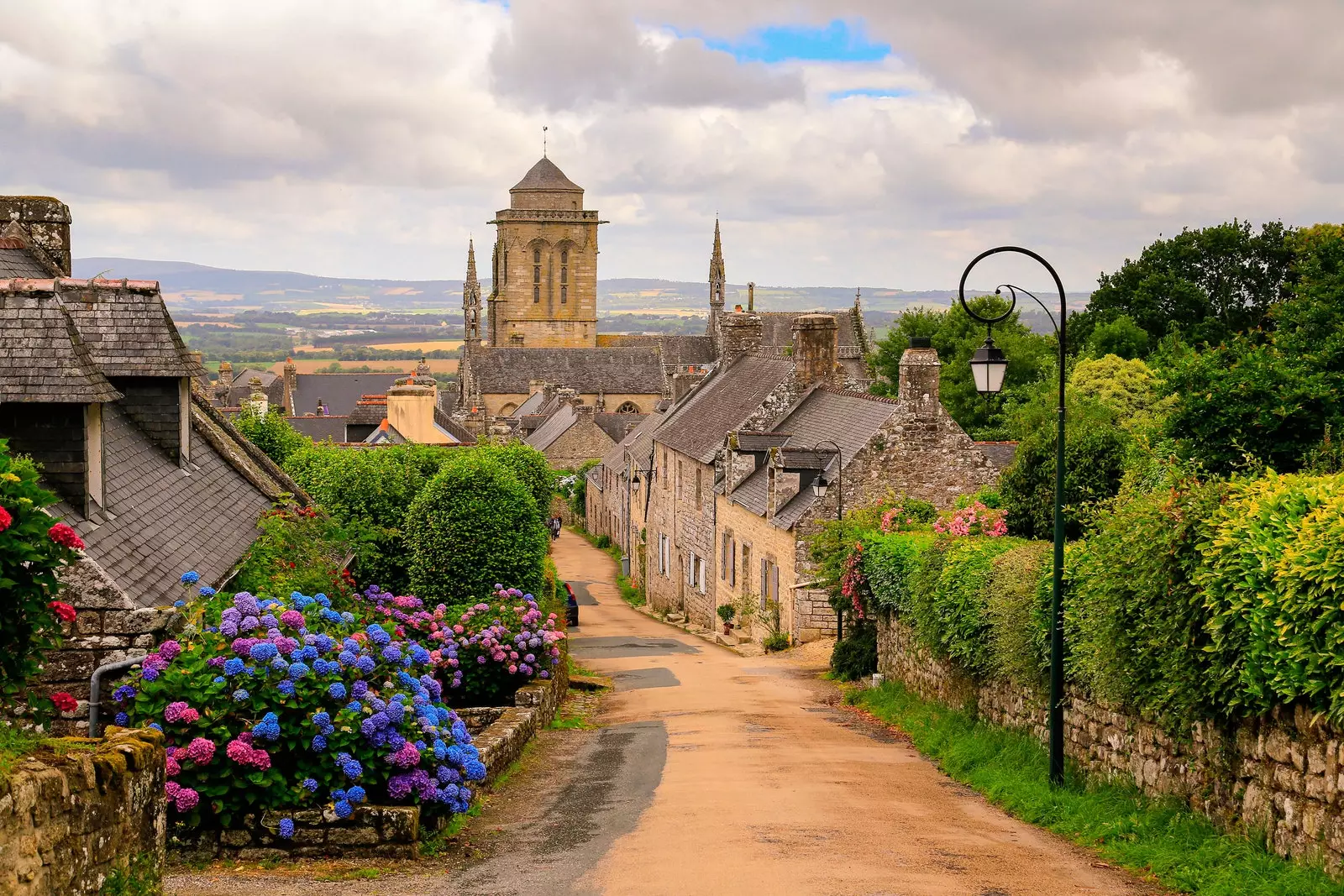
Locronan, Brittany.
OTHER WALLS IN FRONT OF THE SEA
We leave Locronan and go to the south coast in less than an hour and for good reason, to feel the Atlantic breeze again from the walls of the ville close de concarneau.
Like Saint-Malo, Concarneau is a coastal city with a wall that surrounds its most historic part, the ville close, in this case raised on an islet. However, the protagonist of these paragraphs is smaller than her relative from the north.
The islet is surrounded by the port and we access it through a walkway guarded by a striking bell tower. As soon as we cross the robust door we end up in Rue Vauban, the main thoroughfare of this miniature city where shops and restaurants swarm.
The squawk of the seagulls, the smell of salt water, the fishing boats moored in the port… marine atmosphere permeates the streets at all times and can also be seen on the facades of its buildings. Like in Saint-Malo, the state of the walls is good and it is possible to walk along its walkway, ideal to contemplate the small ville close in its entirety.
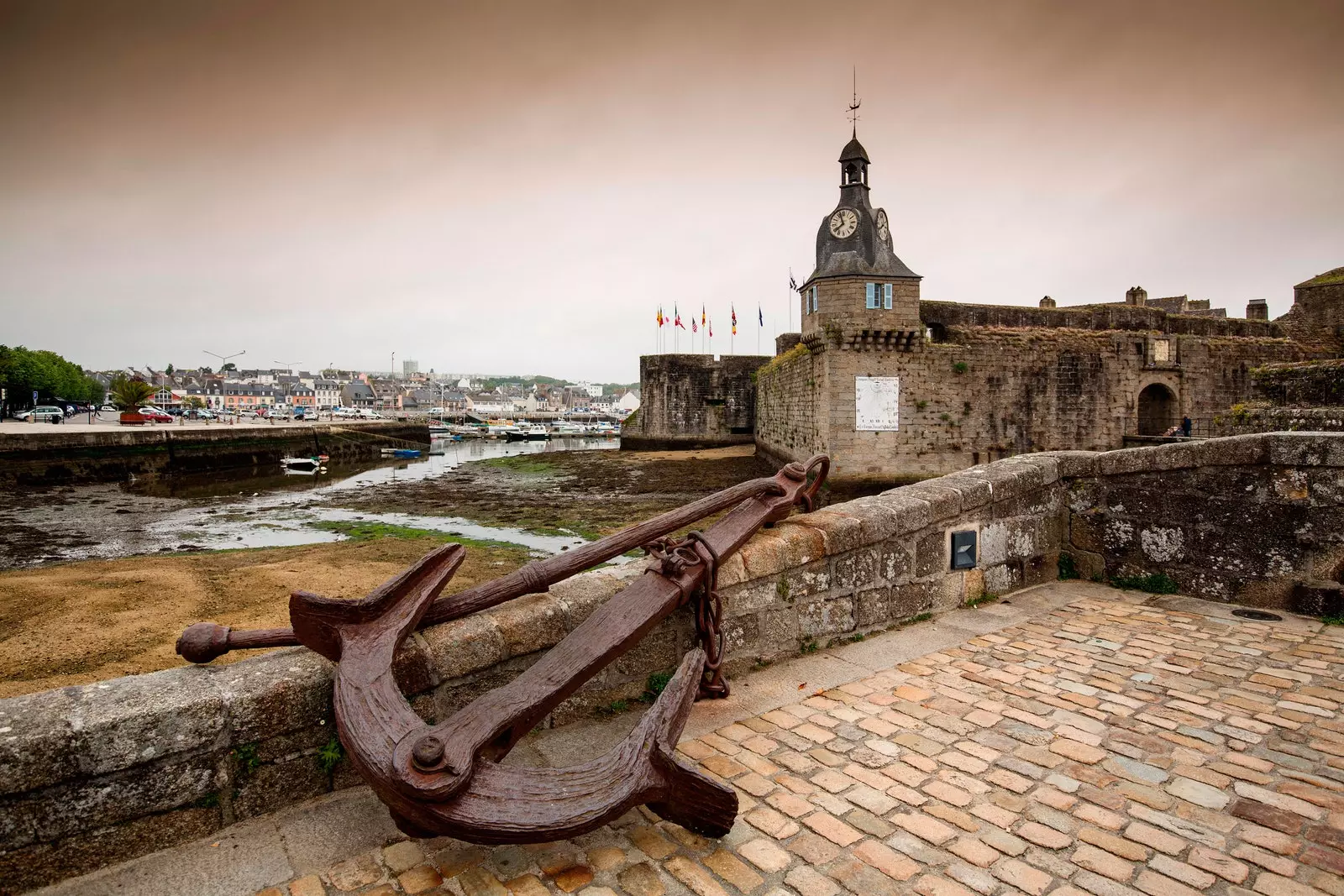
Concarneau, Brittany.
THE FINISTERRE TRILOGY
We conclude the route by Finistere , the western department of Brittany to which Locronan and Concarneau belong, with a third and final stop, which leaves us at Quimper . Here we are talking about a full-fledged city, of more than 60,000 inhabitants , although again we are going to put the focus on the old part, that unfortunately we don't have time for everything.
As in the case of Locronan and also of Rochefort-en-Terre, the last of the places chosen for this article, Quimper's historic center is at the service of pedestrians. The Gothic cathedral, consecrated to Saint Corentin , impresses with its towers over 75 meters high. The works to raise it began in the 13th century and has been restored many times hence its magnificent state of preservation.
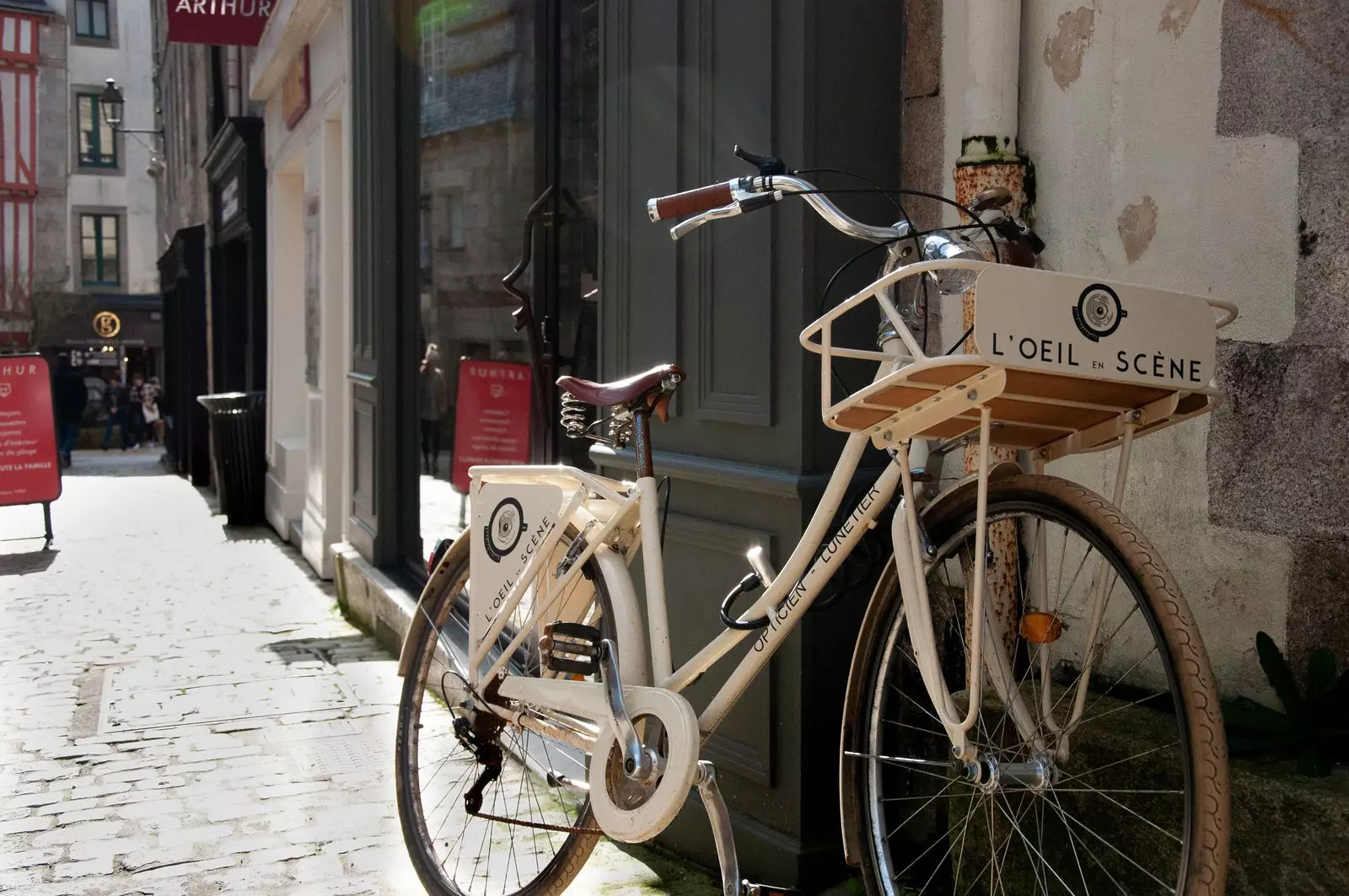
Quimper, Brittany.
From the temple we are going to immerse ourselves in ancient Quimper, entering through kereon street , where you can take some very striking photos with the medieval houses in the foreground and Saint-Corentin in the background. Although the ideal is to go through this entire area taking advantage of the fact that it is not very big either, you cannot leave without going through the well-kept streets Des Boucheries, Des Gentilshommes or Sallé.
Another aspect to highlight in the historic center of Quimper is its squares. In the place Terre au Duc you'll have another good dose of pan de bois, while from Les Halles you glimpse the tower of the church of Saint-Mathieu, another important Christian temple in the city.
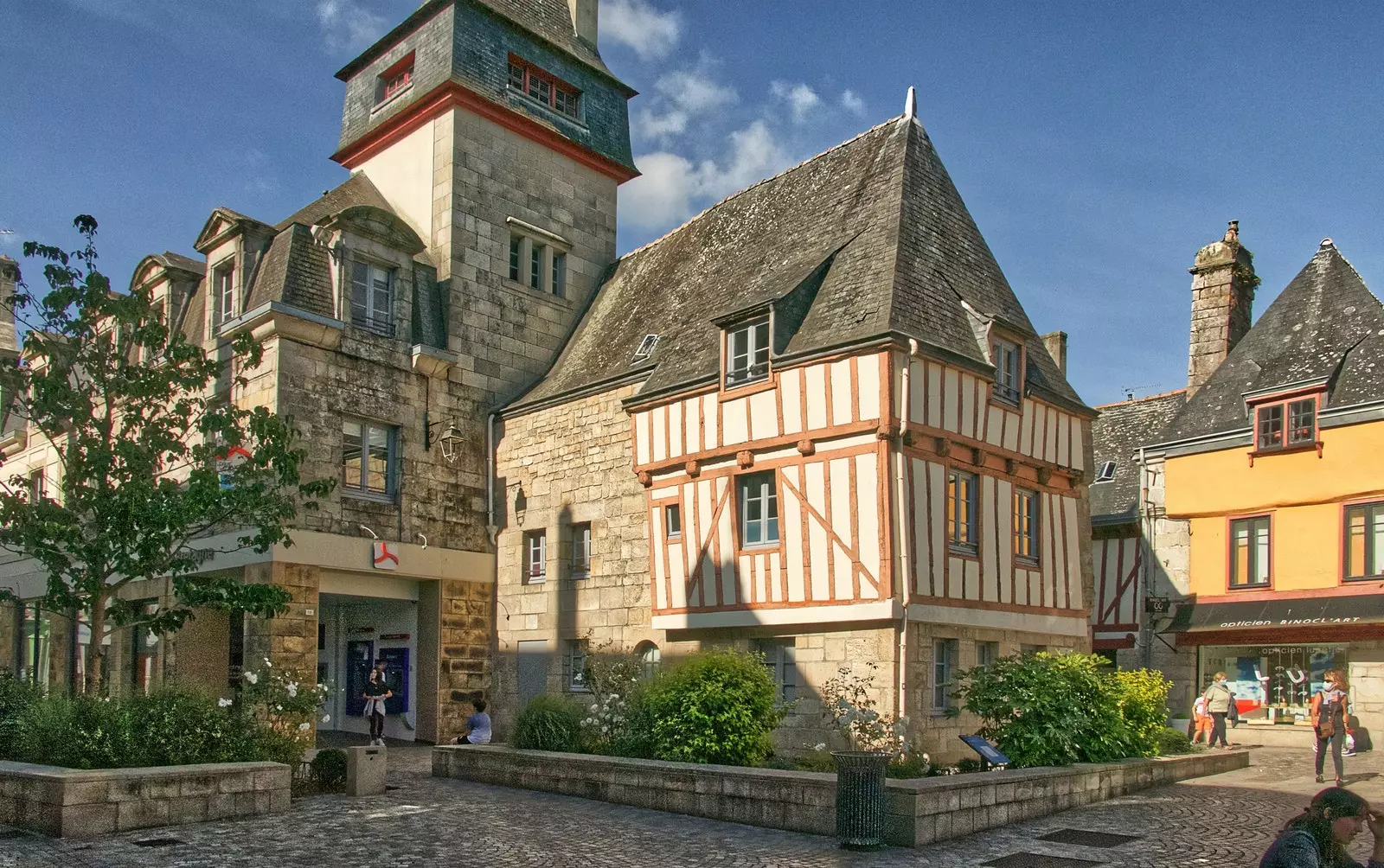
Place de la Terre au Duc, Quimper.
Once you finish the walk, rest your feet on a crêperie and help yourself to a bowl of cider. Crêpes are the main gastronomic attraction of Brittany. In fact, in the Montparnasse district of Paris there are many establishments to eat them and it is rare that they do not have the black and white Breton flag inside.
The crêpes that you will find in Quimper are going to be large and with many both savory and sweet options. The cider , either more or less dry, is the perfect accompaniment.
The second day of the route ends in Quimper.
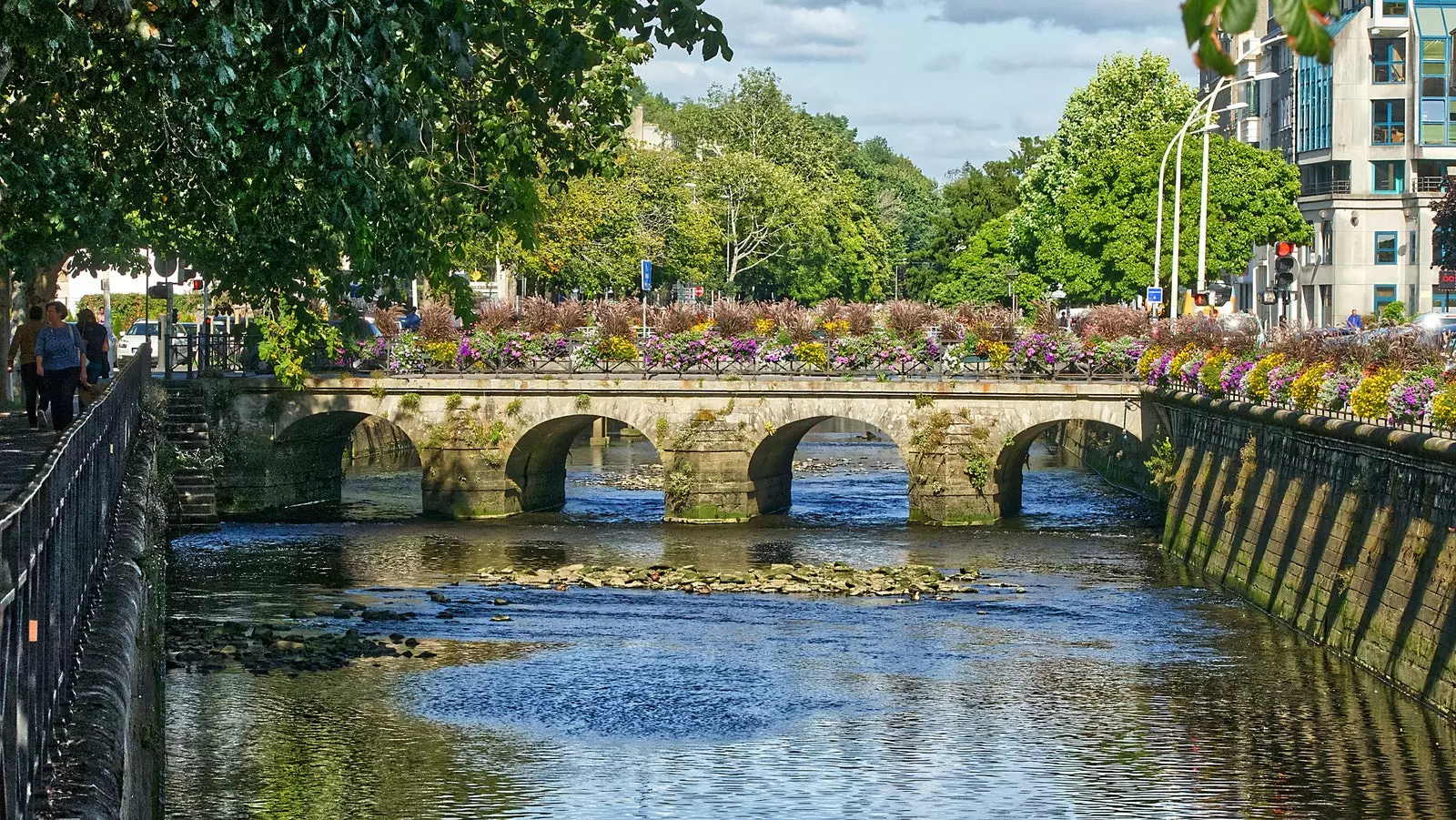
Pont Sainte-Catherine, Quimper.
THE FLOWERY VILLAGE
We leave Finisterre to enter the Morbihan department, where is the town that closes our trip. Rochefort-en-Terre also appears in the woods, in the middle of nowhere, to introduce us to a fairytale.
The flowers overflow from their pots to invade the facades of their buildings, hiding the gray of the rock with a symphony of colors, imitating the neighboring ivy.
The reds, purples, and oranges are patches of color that spread out as we approach the place du Puits, strong point of the town with its rainbow explosion on each ledge, on each wall.
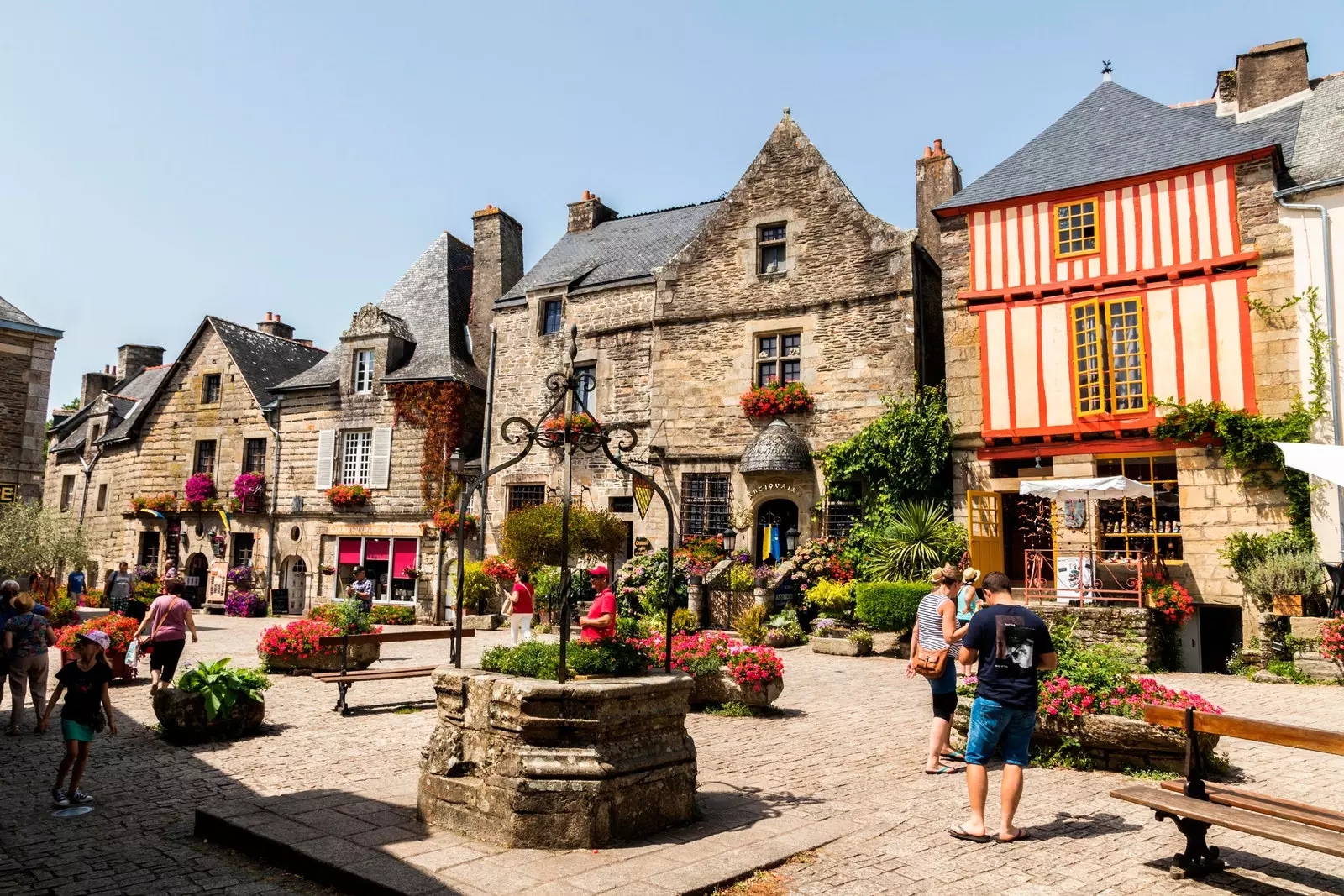
Rochefort-en-Terre, the flowery village of Brittany.
There is no doubt why Rochefort-en-Terre is another of the Most beautiful villages in France. But it also appears on the list of Small towns with character, a project founded in the 1970s that aims to value the heritage of small municipalities throughout the country.
Every narrow street in Rochefort is worth knowing, so picturesque, knowing that it is similar in size to Locronan. In this flowery village there is not so much aesthetic uniformity in the houses, because you see some of granite, suddenly some with a half-timbered frame, others more recent...
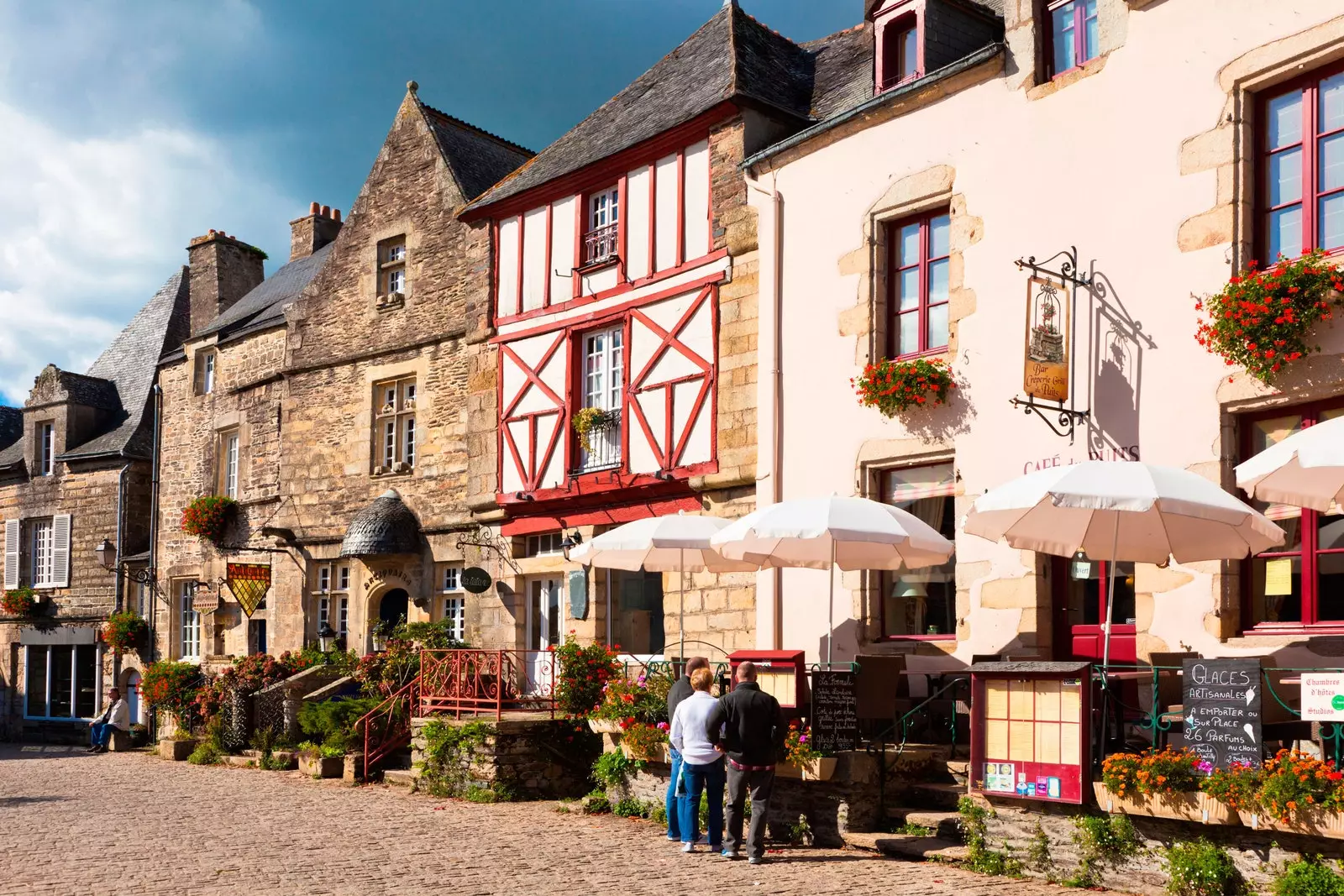
Rochefort-en-Terre.
Rochefort-en-Terre is quite a distance from Paris, so eat well to face the long journey back. Good restaurants abound and we want to recommend the charmer Le Rouge and their fantastic baked camembert cheese with honey.
The trip ends with the return to Paris and the promise of return to visit more towns in Brittany, a region no longer so unknown, to continue unraveling the rest of its mysteries.
